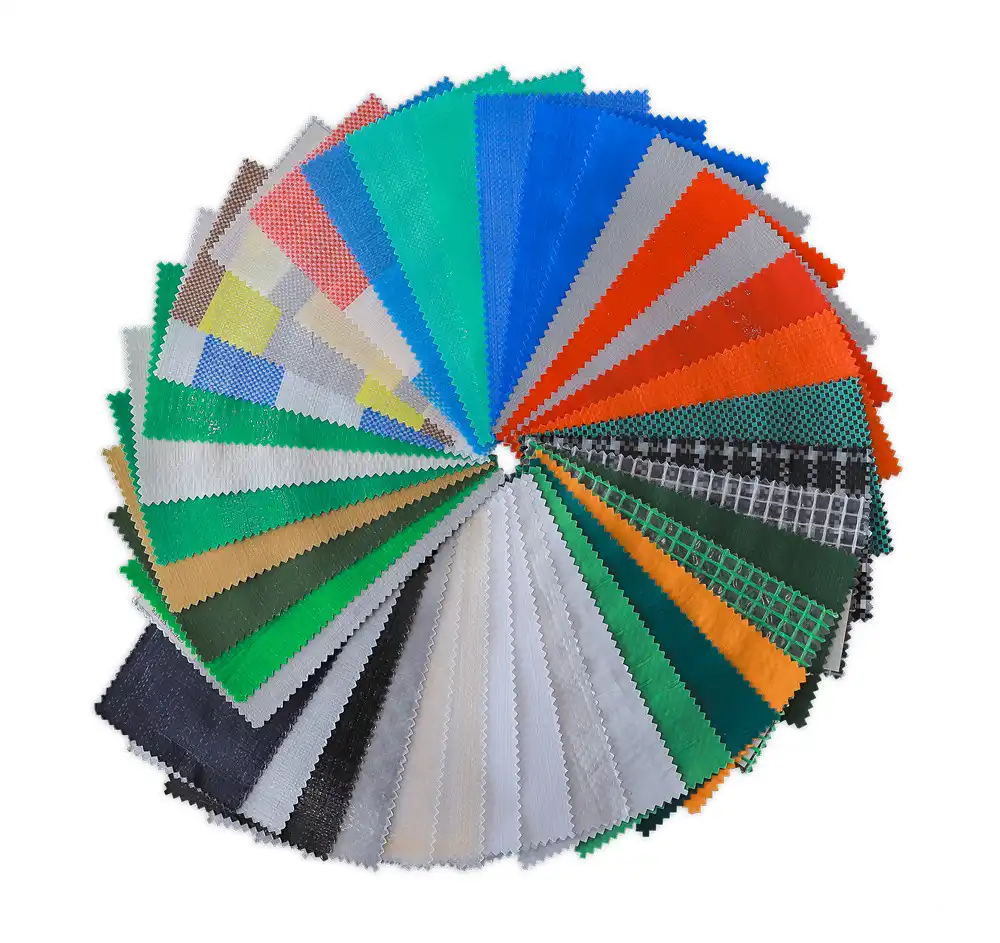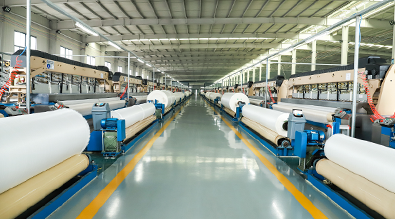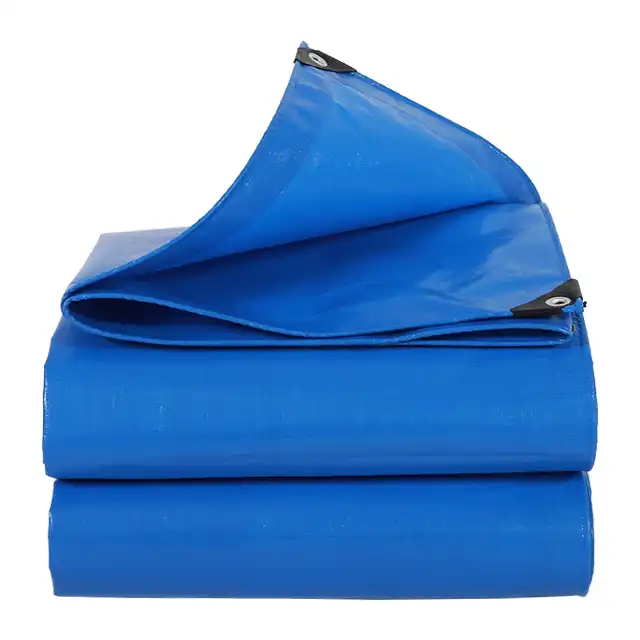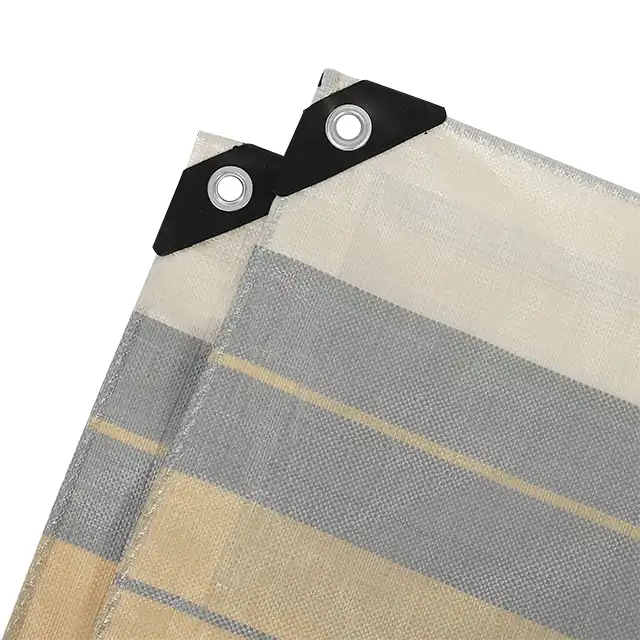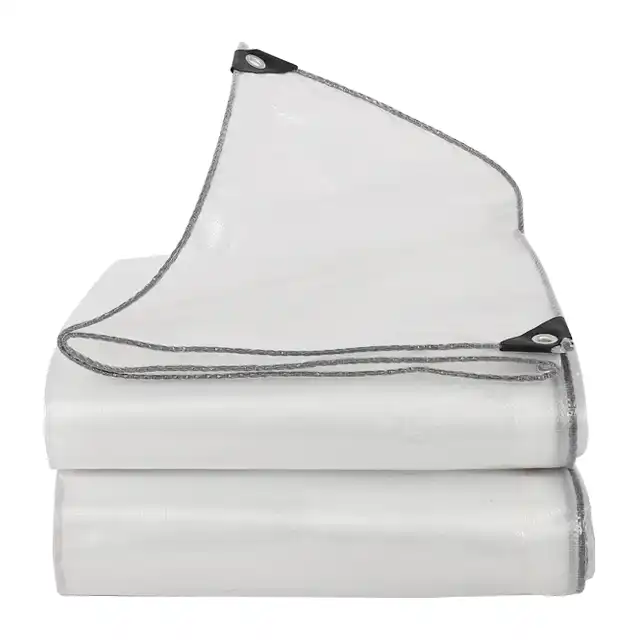Understanding PE Awnings and Their Common Uses
PE awnings represent one of the most versatile and reliable protective solutions in today's industrial and commercial landscape. These polyethylene-based covers have revolutionized how we approach weather protection, cargo security, and temporary shelter needs across various industries. As businesses and individuals seek durable, cost-effective protection solutions, understanding the comprehensive applications and benefits of PE awning systems becomes crucial for making informed purchasing decisions. From construction sites to agricultural operations, from transportation logistics to emergency relief efforts, products have proven their worth through consistent performance and adaptability to diverse environmental challenges.
Essential Characteristics and Construction of PE Awnings
Material Composition and Manufacturing Standards
 The foundation of any high-quality PE awning lies in its material composition and manufacturing process. Premium PE awning products are constructed from high-density polyethylene that undergoes specialized treatment to enhance durability and performance characteristics. The manufacturing process involves extruding polyethylene yarn with denier ranging from 600D to 1800D, creating a strong foundation for the weaving process. This yarn is then processed through advanced water-jet looms, with modern facilities utilizing over 400 units of Korea-imported automatic machinery to ensure consistent quality and precise weaving patterns. The mesh structure typically ranges from 6×6 to 16×16, providing optimal balance between strength and flexibility. LDPE lamination is applied to both sides of the fabric, creating a waterproof barrier while maintaining the material's breathability properties. UV treatment is integrated during manufacturing to prevent degradation from prolonged sun exposure, ensuring the product maintains its structural integrity and protective capabilities over extended periods.
The foundation of any high-quality PE awning lies in its material composition and manufacturing process. Premium PE awning products are constructed from high-density polyethylene that undergoes specialized treatment to enhance durability and performance characteristics. The manufacturing process involves extruding polyethylene yarn with denier ranging from 600D to 1800D, creating a strong foundation for the weaving process. This yarn is then processed through advanced water-jet looms, with modern facilities utilizing over 400 units of Korea-imported automatic machinery to ensure consistent quality and precise weaving patterns. The mesh structure typically ranges from 6×6 to 16×16, providing optimal balance between strength and flexibility. LDPE lamination is applied to both sides of the fabric, creating a waterproof barrier while maintaining the material's breathability properties. UV treatment is integrated during manufacturing to prevent degradation from prolonged sun exposure, ensuring the product maintains its structural integrity and protective capabilities over extended periods.
Weight Specifications and Dimensional Capabilities
Modern PE awning manufacturing capabilities have expanded significantly to accommodate diverse application requirements. Weight specifications for quality PE awning products typically range from 75 GSM to 400 GSM, allowing customers to select appropriate thickness based on specific use cases and environmental conditions. Width capabilities have reached impressive dimensions, with advanced manufacturing facilities producing materials up to 40 meters wide without seaming requirements. This seamless production capability eliminates potential weak points that could compromise the awning's protective properties. Length specifications are customized according to customer requirements, with production facilities equipped to handle extensive continuous runs. The combination of variable weight options and dimensional flexibility ensures that solutions can be tailored to virtually any application, from small-scale residential projects to massive industrial installations requiring comprehensive coverage areas.
Advanced Feature Integration and Performance Enhancements
Contemporary PE awning products incorporate numerous advanced features that distinguish them from basic tarpaulin alternatives. The integration of tear-resistant properties ensures longevity even under challenging conditions involving sharp objects or high-stress applications. Anti-freezing capabilities allow PE awning materials to maintain flexibility and performance in extreme cold conditions, making them suitable for year-round outdoor applications. UV treatment goes beyond basic protection, incorporating advanced stabilizers that prevent color fading and material degradation over extended exposure periods. Shrink-proof characteristics ensure dimensional stability, preventing the product from contracting or expanding significantly with temperature variations. Arctic flexibility features enable the material to remain pliable and workable even in sub-zero temperatures, while anti-corrosion properties protect against chemical exposure and environmental contaminants. These integrated features combine to create product solutions that deliver consistent performance across diverse environmental conditions and application scenarios.
Comprehensive Application Domains for PE Awnings
Transportation and Logistics Applications
The transportation industry represents one of the largest application domains for PE awning systems, where reliability and durability are paramount for protecting valuable cargo during transit. Truck canopy applications utilize PE awning materials to create secure, weather-resistant covers that protect freight from rain, snow, UV exposure, and road debris. The material's lightweight properties reduce overall vehicle weight while maintaining superior protective capabilities, contributing to fuel efficiency without compromising cargo security. Ship cover applications leverage the waterproof and salt-resistant properties of quality PE awning materials to protect vessels and equipment in marine environments. Cargo storage applications in ports and shipping facilities utilize large-scale PE awning installations to create temporary or semi-permanent covered storage areas, protecting goods from weather exposure while awaiting processing or shipment. The material's resistance to marine environments, including salt spray and high humidity conditions, makes it solutions ideal for coastal and maritime applications where traditional materials might deteriorate rapidly.
Construction and Industrial Site Protection
Construction sites present unique challenges requiring robust, adaptable protection solutions that PE awning systems address effectively. Site enclosure applications utilize PE awning materials to create privacy barriers, dust containment systems, and weather protection for ongoing construction activities. Building insulation applications incorporate materials as vapor barriers and temporary weather protection during construction phases, protecting partially completed structures from moisture infiltration and weather damage. Industrial facilities utilize systems for equipment protection, creating covered storage areas for machinery and materials that require protection from environmental exposure. The material's durability allows it to withstand the harsh conditions typical of construction environments, including exposure to construction debris, heavy machinery operations, and varying weather conditions. Temporary structure applications utilize PE awning materials to create quick-deployment shelters for worker protection, tool storage, and material staging areas, providing essential protection while maintaining the flexibility to relocate as project needs evolve.
Agricultural and Horticultural Applications
Agricultural applications for PE awning systems have expanded significantly as farmers and growers recognize the material's versatility and cost-effectiveness for crop protection and facility enhancement. Greenhouse applications utilize PE awning materials to create controlled growing environments that protect crops from adverse weather while allowing optimal light transmission for plant growth. The material's UV treatment ensures longevity while preventing harmful radiation from damaging sensitive plants. Pond cloth applications in aquaculture operations utilize the waterproof properties of materials to create containment systems for fish farming and water storage applications. Gardening bag applications leverage the material's durability and breathability to create long-lasting growing containers that withstand outdoor conditions while promoting healthy root development. Irrigation applications utilize PE awning materials in canal lining and water distribution systems, taking advantage of the material's waterproof properties and resistance to chemical treatments commonly used in agricultural water systems.
Specialized Applications and Emergency Response Solutions
Emergency Relief and Disaster Response
PE awning materials play a crucial role in emergency response and disaster relief operations where rapid deployment and reliable performance are essential for protecting displaced populations and emergency supplies. Emergency shelter applications utilize PE awning materials to create temporary housing solutions that provide immediate protection from weather exposure while relief efforts are organized. The material's lightweight properties facilitate rapid transportation to disaster areas, while its durability ensures reliable performance under challenging conditions. Supply protection applications use PE awning systems to create secure storage areas for emergency supplies, medical equipment, and relief materials, protecting these critical resources from weather damage and contamination. Evacuation center applications incorporate PE awning materials to create covered areas for processing evacuees and organizing relief efforts, providing essential protection for both people and equipment during crisis situations. The material's resistance to various environmental conditions makes it ideal for emergency applications where performance cannot be compromised.
Recreational and Commercial Applications
The versatility of PE awning materials extends into recreational and commercial applications where aesthetics and functionality must be balanced with durability and cost-effectiveness. Leisure tent applications utilize materials to create durable, weather-resistant camping and recreational shelters that provide reliable protection for outdoor activities. Picnic pad applications leverage the material's waterproof properties to create ground covers that protect against moisture while providing comfortable surfaces for outdoor gatherings. Sun shade cover applications utilize PE awning materials to create UV-protective installations for recreational areas, playgrounds, and outdoor seating areas in commercial establishments. Car canopy applications provide vehicle protection in residential and commercial settings, creating covered parking areas that protect vehicles from weather exposure, UV damage, and debris. The material's aesthetic flexibility allows for customization in color and design to complement architectural features while maintaining superior protective capabilities.
Specialized Industrial and Manufacturing Applications
Manufacturing and industrial facilities utilize systems for specialized applications that require precise performance characteristics and long-term reliability. Wood cover applications protect lumber and building materials from moisture damage and UV exposure, maintaining material quality during storage and preventing costly inventory losses. Goods protection applications in warehousing and distribution facilities utilize PE awning systems to create protective covers for inventory stored in outdoor or semi-outdoor environments. Impermeable tarp applications in aquaculture operations create containment systems that prevent water loss while maintaining optimal conditions for aquatic organisms. These specialized applications require PE awning materials to meet specific performance criteria, including chemical resistance, temperature stability, and long-term durability under continuous exposure conditions. The material's adaptability allows manufacturers to customize properties to meet specific industrial requirements while maintaining cost-effectiveness compared to specialized alternatives.
Conclusion
The comprehensive understanding of PE awnings and their diverse applications reveals why these versatile protective solutions have become indispensable across numerous industries. From transportation and construction to agriculture and emergency response, PE awning systems provide reliable, cost-effective protection that adapts to challenging environments and demanding performance requirements. The advanced manufacturing processes, quality materials, and integrated performance features combine to create solutions that consistently deliver superior protection while maintaining operational efficiency and cost-effectiveness.
For businesses and organizations seeking reliable PE awning solutions, partnering with an established manufacturer ensures access to quality products backed by extensive experience and proven performance. Linyi Shengde Plastic Co., Ltd. stands as a leading enterprise in the PE tarpaulin field, established in 2003 with over two decades of manufacturing excellence and innovation. Our commitment to high-quality products at reasonable prices, combined with considerate service and rigorous quality management systems, has earned the trust of customers worldwide. With ISO 9001:2015 certification and partnerships with international organizations including UNHCR, IOM, ICRC, and UNICEF, we demonstrate our capability to meet the most demanding application requirements.
Our advanced research and development capabilities continue to drive innovation in PE awning technology, including ultra-wide width production capabilities, enhanced fire prevention features, and superior waterproofing technologies. Whether you require standard products or customized solutions, our experienced team has the expertise to deliver products that meet your specific requirements while maintaining our commitment to quality and reliability. Contact us today at info@shengdetarp.com to discuss your PE awning needs and discover how our innovative solutions can enhance your operations.
References
1. Anderson, M.J. & Thompson, R.K. (2019). "Polyethylene Tarpaulin Materials: Engineering Properties and Industrial Applications." Journal of Industrial Textiles and Materials Science, 45(3), 234-251.
2. Chen, L.W., Rodriguez, P.M. & Williams, D.A. (2021). "Weather-Resistant Coverings in Construction: Performance Analysis of PE-Based Protection Systems." Construction Materials and Technology Review, 28(7), 412-429.
3. Kumar, S.R. & Martinez, E.J. (2020). "Agricultural Applications of Synthetic Protective Fabrics: A Comprehensive Study of Polyethylene Awning Systems." Agricultural Engineering and Technology Journal, 33(2), 156-173.
4. O'Brien, K.P., Zhang, H.L. & Davis, T.M. (2022). "Emergency Shelter Materials: Evaluation of PE Tarpaulin Performance in Disaster Relief Operations." International Emergency Management Review, 19(4), 78-95.
